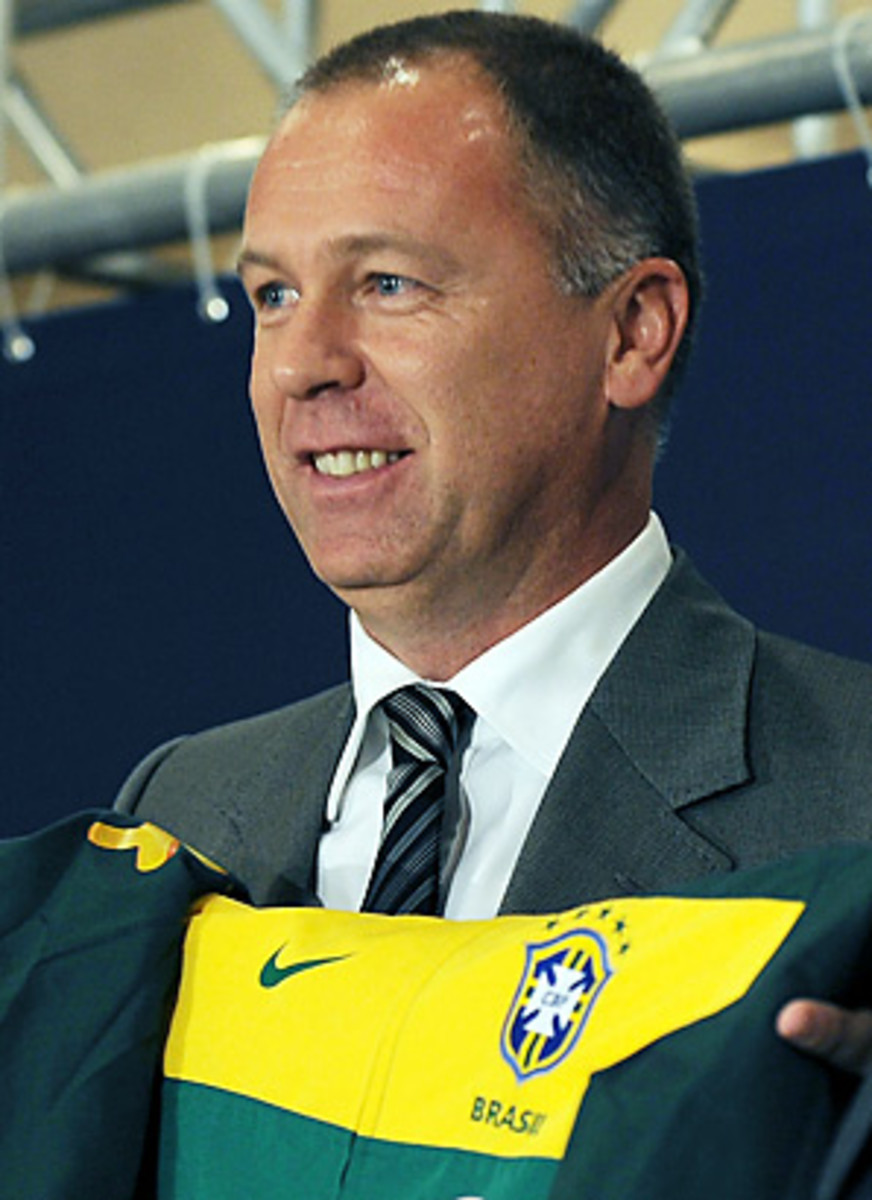Brazil looking to rediscover itself by embracing tactics from abroad
Half of Menezes' group of 24 play their club soccer in Brazil, but this will be a difficult line to maintain; within weeks Robinho is due to return to Manchester City, midfielder Sandro will join Tottenham and striker Andre will move to Dynamo Kiev. Others will surely follow. Still, the selection of home-based players always goes down well with the Brazilian public, especially after a preponderance of European-based players was largely blamed for the team's loss to the Netherlands in the World Cup quarterfinals.
It was an easy accusation. But one without much substance. Brazil's sides in last year's World Cups at Under-20 and Under-17 levels were made up of home-based youngsters. But the style of play was not recognizably different from Dunga's team in South Africa -- there was individual talent, a threat on the counterattack and quick breaks from the fullbacks, but a clunking lack of fluidity because the central midfield was packed with tall, defensively minded, limited players.
There is a European influence in all this -- but not one exclusive to the other side of the Atlantic. One of the crucial components of contemporary Brazilian football comes from a part of Europe that lies inside Brazil.
When this giant country finally launched its national championship in 1971, it was assumed that the clubs from Rio de Janeiro and Sao Paulo would monopolize the honors. They had been the leading forces throughout the history of the Brazilian game and had supplied nearly all the players in the World Cup-winning campaigns of the national team.
But that's not the way it turned out. As the opening years of the domestic championship wore on, the dominant team was Internacional of Porto Alegre. In the first decade it finished outside the top five only once and won the title in 1975, '76 and as an unbeaten side in '79. There was no shortage of artistry on the roster -- this is where the great midfielder Falcao made his name.
But unlike Rio and Sao Paulo, Porto Alegre is Brazil at its most European. The capital of the southern state of Rio Grande do Sul, Porto Alegre is largely populated by immigrants from Germany and Italy. That left its mark on local soccer. Inter's great local rival is Gremio, a club once restricted to Germans. The very name "Internacional" registers an openness to immigrants from all over -- Italians and French, Spanish, Poles and Portuguese.
The European brew had a clear influence on the style of soccer in the region. "Gaucho" (the nickname for people from the state) soccer has long been known for its combative style, with tough marking and physical contact. And given the platform of a national championship, Internacional showed in the '70s that such a style could be effective. Rubens Minelli, who coached the title teams in '75 and '76, wanted his players to stand at least 6-feet. He was influential and successful -- and winners are usually copied.
Nearly 40 years after the birth of the national championship, that Gaucho spirit has permeated Brazilian football. Many of the country's top coaches are from Rio Grande do Sul, something that would have been unthinkable in the '60s. And the Gauchos seem to have a near monopoly on the national team. Luiz Felipe Scolari is a Gaucho and made his name in the mid-'90s with a highly combative Gremio side. Dunga embodies the Gaucho spirit. And Menezes, with his blue eyes and pale skin, is also from Rio Grande do Sul.
In the case of Menezes, though, there could be some good news for the purists. His approach is likely to be different from that of Dunga. The new man is unlikely to produce a team that only works on the counterattack, where the balance of the central midfielders is tipped toward defense.
Menezes is likely to work from a basis of the 4-2-3-1 formation -- used by the most attractive European teams in the World Cup. His side will not be dependent on fullbacks for attacking width. They will take up more defensive duties, freeing the central midfielders to play a more expansive role.
The result should be a team that is more fluid and less predictable than some recent Brazilian sides that have employed a rigid demarcation between creators and destroyers. It is an optimistic view, but maybe this new coach, so European in appearance, might end up giving Brazilian soccer a tiny nudge back toward the direction that once made it so great.





